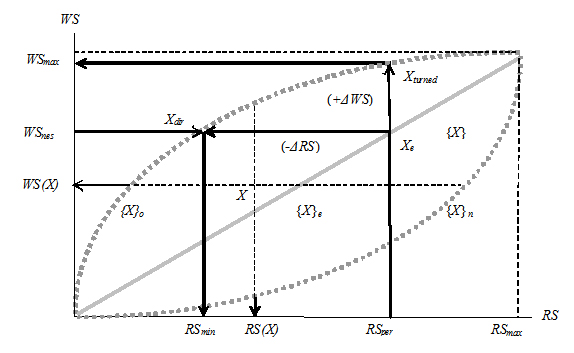Development of a methodological approach to the research of special purpose communication systems
DOI:
https://doi.org/10.15587/2706-5448.2022.269378Keywords:
forces and devices of communication, research methods, grouping of troops (forces), operational managementAbstract
Hierarchical construction of special purpose systems, a large number of different types of communication devices that are the part of them necessitates the need to justify the order of research of special communication systems. Existing approaches to conduct research on special purpose communication systems are narrowly focused and aimed at researching certain types of communication. A large number of destabilizing factors affecting the functioning of special purpose communication systems and a priori uncertainty about the conditions of its application only complicate the mentioned issue. Also, the experience of the full-scale armed aggression of the armed forces of the Russian Federation on the territory of Ukraine showed the need to change approaches to the research of special purpose communication systems. That is why the issue of improving the effectiveness of the management of forces and devices of communication of groups of troops (forces) during operations is an important and urgent issue. The object of the research is the communication system of the group of troops (forces). The subject of the research is the effectiveness of the communication system of the group of troops (forces) in accordance with the purpose of the operation. The research developed a methodical approach to the research of special purpose communication systems. The novelty of the proposed methodical approach consists in taking into account the efficiency while choosing this or that method while investigating the state of a special-purpose communication system and the ability to calculate the reliability while choosing this or that method while investigating the state of a special-purpose communication system. Also, the element of novelty of this methodical approach is taking into account the efficiency of the decisions made regarding the assessment of the state of the special purpose communication system while choosing one or another research method. It is advisable to implement the mentioned approach in algorithmic and program software while studying the state of the special purpose communication system.
References
- Shishatckii, A. V., Bashkirov, O. M., Kostina, O. M. (2015). Rozvitok іntegrovanikh sistem zv’iazku ta peredachі danikh dlia potreb Zbroinikh Sil. Ozbroennia ta vіiskova tekhnіka, 1 (5), 35–40.
- Sokolov, K. O., Gudima, O. P., Tkachenko, V. A., Shiiatii, O. B. (2015). Osnovnі napriami stvorennia ІT-іnfrastrukturi Mіnіsterstva oboroni Ukraini. Zbіrnik naukovikh pratc Tcentru voenno-strategіchnikh doslіdzhen, 3 (6), 26–30.
- Makarenko, S. I. (2017). Perspektivy i problemnye voprosy razvitiia setei sviazi spetcialnogo naznacheniia. Sistemy upravleniia, sviazi i bezopasnosti, 2, 18–68.
- Onumanyi, A. J., Abu-Mahfouz, A. M., Hancke, G. P. (2021). Amplitude quantization method for autonomous threshold estimation in self-reconfigurable cognitive radio systems. Physical Communication, 44, 101256. doi: https://doi.org/10.1016/j.phycom.2020.101256
- Tamilarasi, D., Ramesh, P., Krishnamoorthy, R., Bharatiraja, C., Jayasankar, T. (2021). Design of radio frequency integrated circuit for RF to DC power converter for bio-medical application. Materials Today: Proceedings, 45, 2139–2144. doi: https://doi.org/10.1016/j.matpr.2020.09.733
- Bodianskyi, E. V., Strukov, V. M., Uzlov, D. Yu. (2017). Generalized metrics in the problem of analysis of multidimensional data with different scales. Zbirnyk naukovykh prats Kharkivskoho natsionalnoho universytetu Povitrianykh Syl, 3 (52), 98–101.
- Noh, B., Son, J., Park, H., Chang, S. (2017). In-Depth Analysis of Energy Efficiency Related Factors in Commercial Buildings Using Data Cube and Association Rule Mining. Sustainability, 9 (11), 2119. doi: https://doi.org/10.3390/su9112119
- Tymchuk, S. (2017). Methods of Complex Data Processing from Technical Means of Monitoring. Path of Science, 3 (3), 4.1–4.9. doi: https://doi.org/10.22178/pos.20-4
- Zhou, S., Yin, Z., Wu, Z., Chen, Y., Zhao, N., Yang, Z. (2019). A robust modulation classification method using convolutional neural networks. EURASIP Journal on Advances in Signal Processing, 2019 (1). doi: https://doi.org/10.1186/s13634-019-0616-6
- Zhang, D., Ding, W., Zhang, B., Xie, C., Li, H., Liu, C., Han, J. (2018). Automatic Modulation Classification Based on Deep Learning for Unmanned Aerial Vehicles. Sensors, 18 (3), 924. doi: https://doi.org/10.3390/s18030924
- Zuiev, P., Zhyvotovskyi, R., Zvieriev, O., Hatsenko, S., Kuprii, V., Nakonechnyi, O. et al. (2020). Development of complex methodology of processing heterogeneous data in intelligent decision support systems. Eastern-European Journal of Enterprise Technologies, 4 (9 (106)), 14–23. doi: https://doi.org/10.15587/1729-4061.2020.208554
- Meleshko, Y., Drieiev, O., Drieieva, H. (2020). Method of identification bot profiles based on neural networks in recommendation systems. Advanced Information Systems, 4 (2), 24–28. doi: https://doi.org/10.20998/2522-9052.2020.2.05
- Rybak, V. A., Akhmad, Sh. (2016). Analiticheskii obzor i sravnenie sushchestvuiushchikh tekhnologii podderzhki priniatiia reshenii. Sistemnyi analiz i prikladnaia informatika, 3, 12–18.

Downloads
Published
How to Cite
Issue
Section
License
Copyright (c) 2022 Inha Semenenko, Yurii Artabaiev, Larisa Degtyareva, Yuliia Vakulenko, Elena Odarushchenko, Oleksii Nalapko, Artur Zarubenko, Dmytro Pavliuk, Hanna Demianenko, Bohdan Kovalchuk

This work is licensed under a Creative Commons Attribution 4.0 International License.
The consolidation and conditions for the transfer of copyright (identification of authorship) is carried out in the License Agreement. In particular, the authors reserve the right to the authorship of their manuscript and transfer the first publication of this work to the journal under the terms of the Creative Commons CC BY license. At the same time, they have the right to conclude on their own additional agreements concerning the non-exclusive distribution of the work in the form in which it was published by this journal, but provided that the link to the first publication of the article in this journal is preserved.







